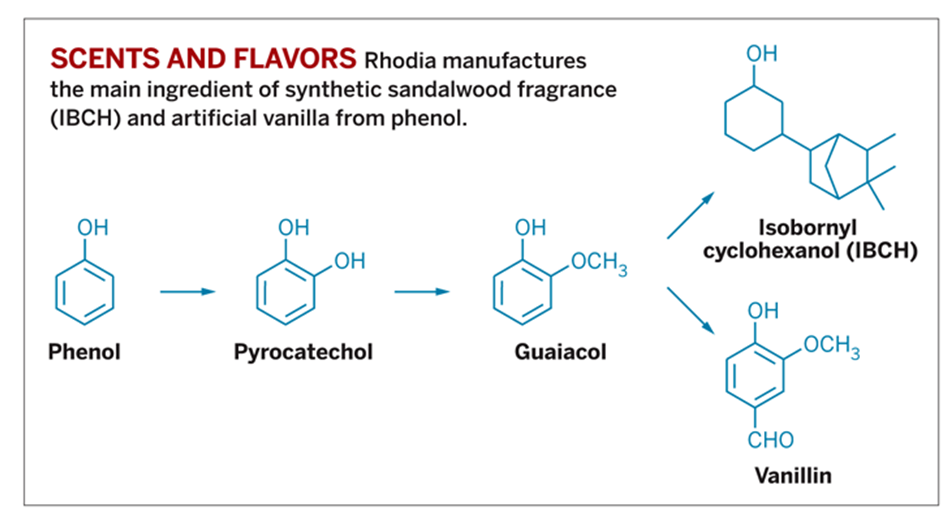with Zoltan Mester, Ph.D.
In a recent article in Chemical and Engineering News (C&EN), March 21, 2011, page 21, the author brings to light another insightful case where after careful evaluation of the synthetic pathways, renewable isn’t always better than synthetic.
The article starts with “The smell of sandalwood is omnipresent in temples and on streets throughout Asia. As the most common scent in incense sticks, the smell of sandalwood oil conjures the idea of Asia more fittingly than probably any other.”
The sandalwood tree has been so overharvested in recent years that the United Nations classifies it as an endangered species. As a result, one forward looking company, Rhodia, sees growing market opportunities for synthetic sandalwood fragrance chemicals. The French company expects that its environmentally friendly process will find favor among the growing ranks of so-called ethical buyers in Asia and the rest of the world. “Demand for sandalwood is growing at a time when it’s protected worldwide against overexploitation,” says Olivier Champault, the Shanghai-based general manager of Rhodia’s aroma performance business in Asia. “Our synthetic product preserves a natural resource, is environmentally friendly, and its performance is nearly identical to the natural product.” Besides being a popular scent for incense, sandalwood is used as an aroma in soaps.
After careful study, Rhodia’s management made a decision to replace plant derived isobornyl cyclohexanol (IBCH), a key ingredient in sandalwood oil used in fragrances, with synthetic IBCH. According to Rhodia, the synthetic route via pyrocathecol generates no toxic waste, consumes half the quantity of water and emits 95 percent less nitrogen oxides compared to the plant derived process. In that spirit Peter Wullschleger head of media relations at the Swiss fragrance company Givaudan says: “it is more and more questioned that using the product that comes from a natural source is the best”.
To make IBCH in its Chinese operations, Rhodia processes phenol to produce hydroquinone and pyrocatechol via hydroxylation. Pyrocatechol is converted into guaiacol, which is further processed to yield IBCH and vanillin, better known as artificial vanilla.
Synthetic route to make IBCH:
Here again we have another example of holistically evaluating an ingredient yields an interesting conclusion. We have seen multiple examples where “renewable resources” didn’t mean that they were best for the environment or had long-term sustainability. For example fossil fuel energy requirements can be reduced if renewable energy sources are available (solar, hydroelectric, wind, biomass), atom economy can be improved by newly discovered catalytic conversions, and for bio-based materials genetic engineering, although not without controversy, can reduce pesticide and herbicide use. The very notion that a chemical substance, including a polymer, is labeled “green” “organic” or “natural” needs to be scrutinized carefully, since not always does renewable yield the most environmentally friendly solution.



I want to know-A low cost/synthetic/sandal compound/formula by mixing of aromatic chemicals soothing fragrance as natural sandalwood oil for agarbatti while it is burning